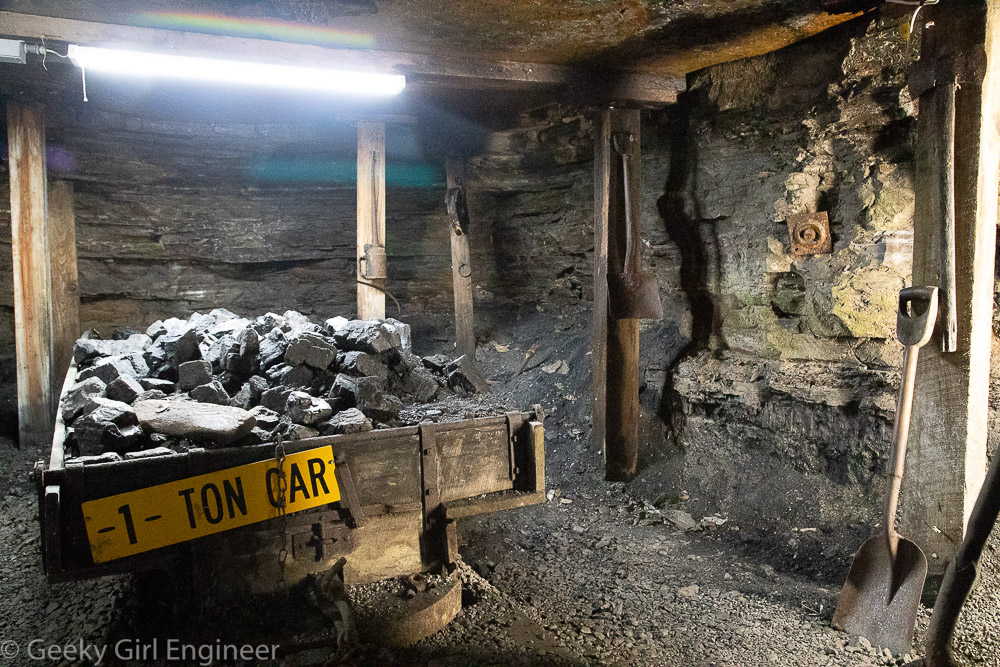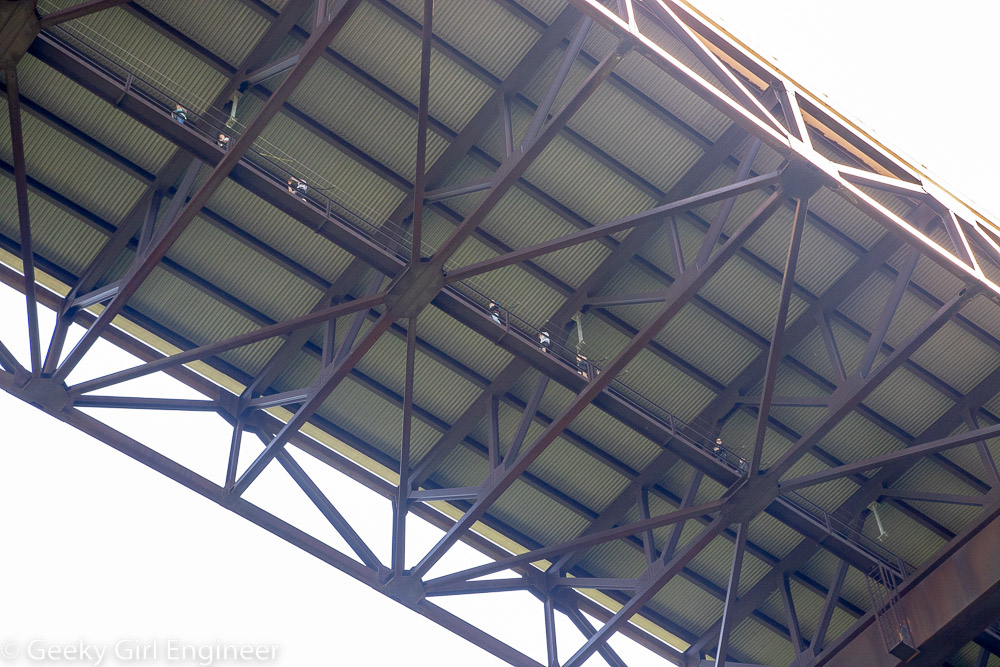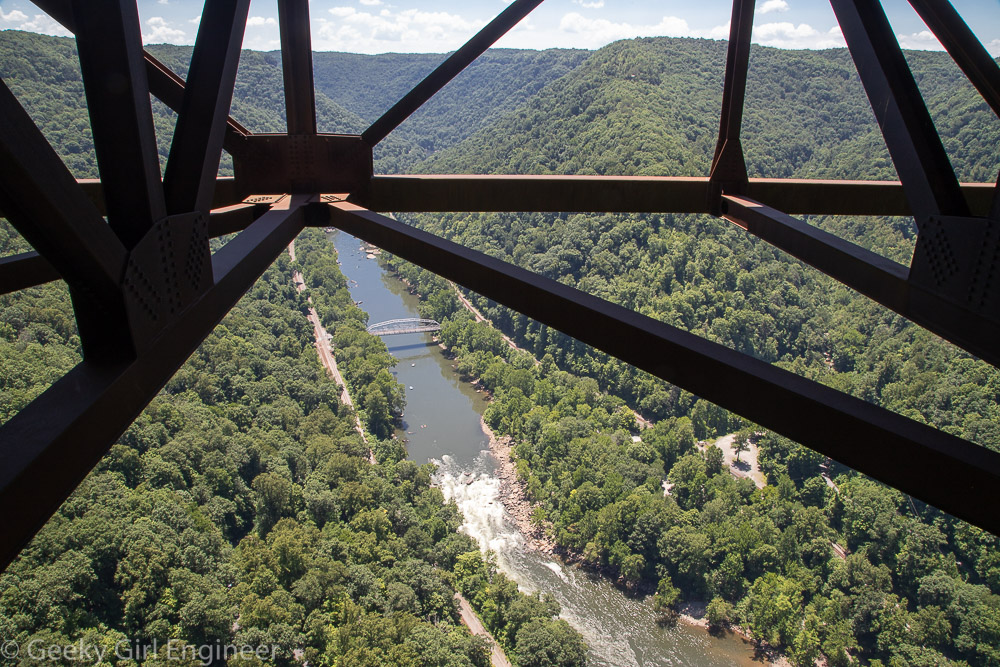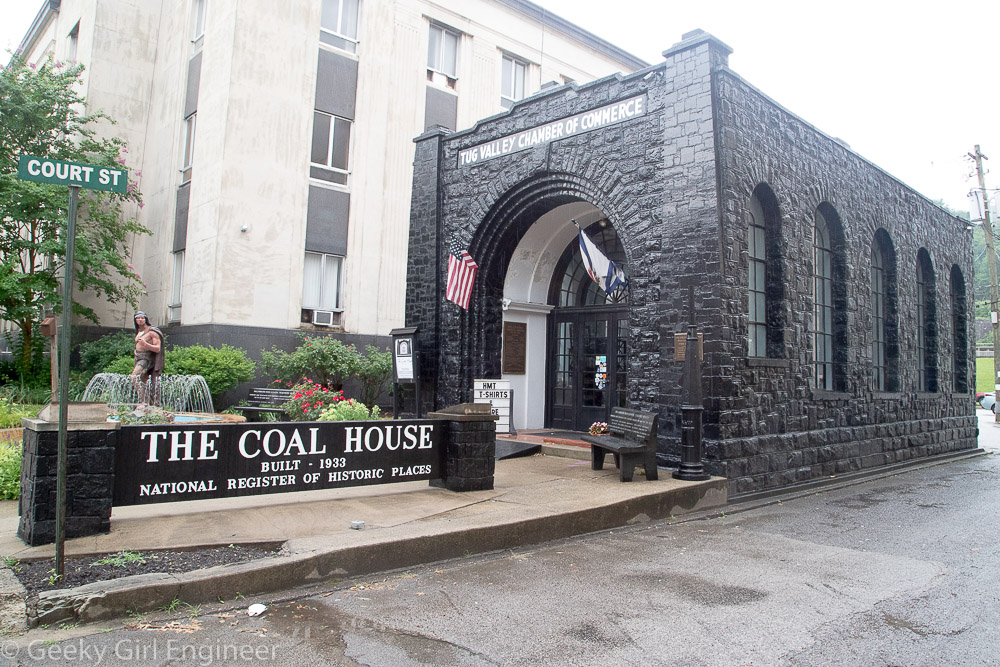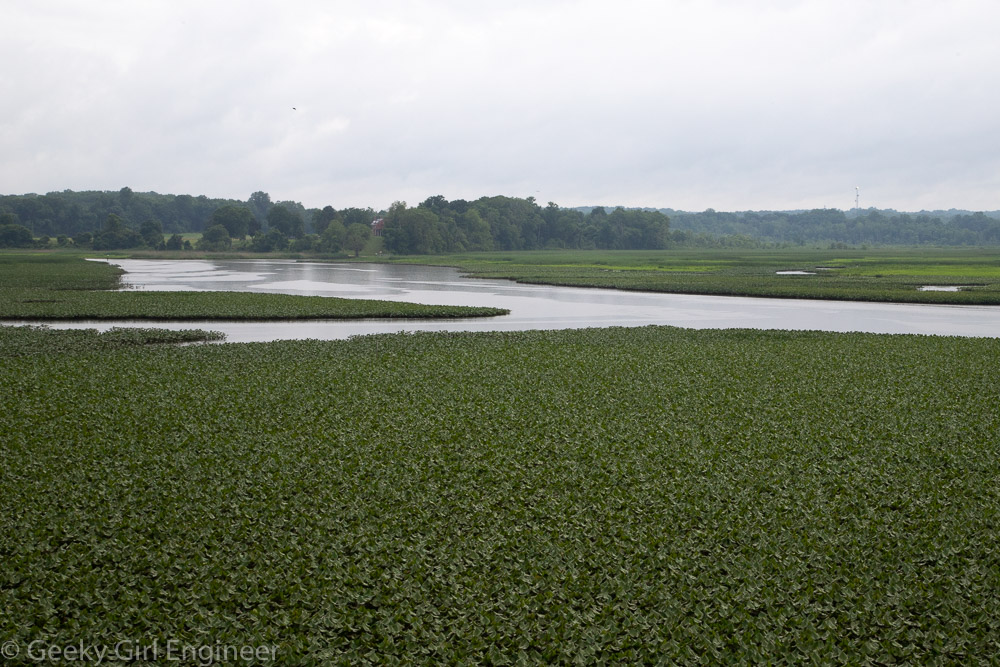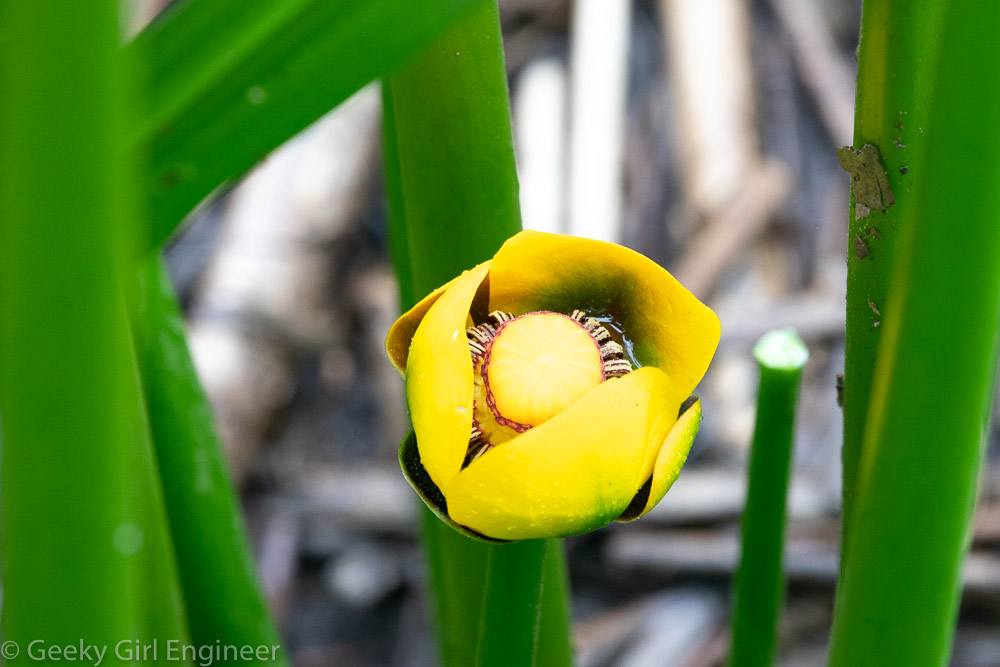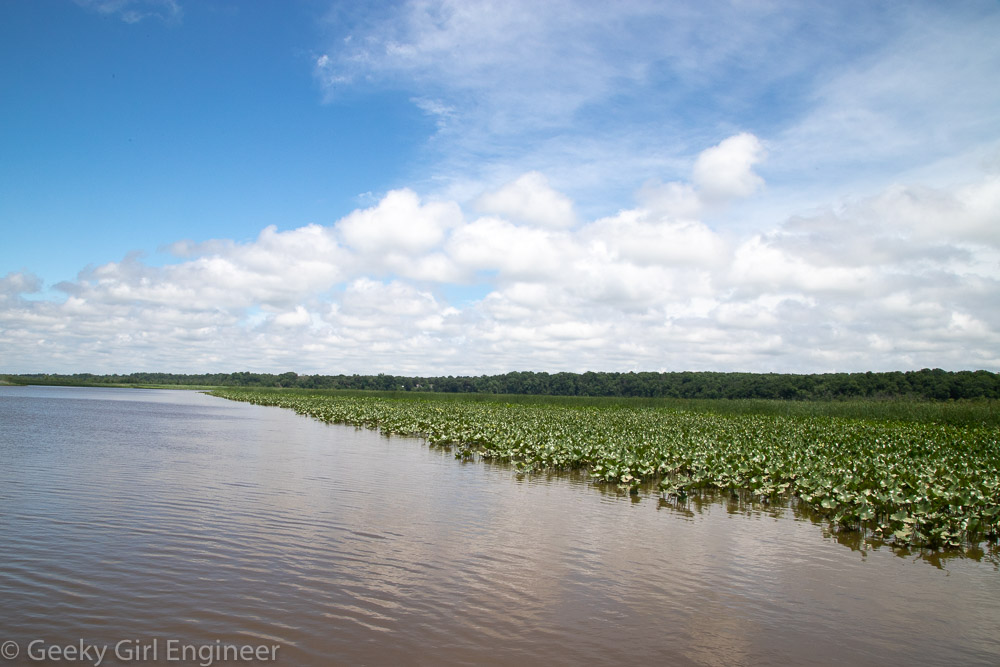While visiting New River Gorge National Park, I am in the Beckley area, so I decided to visit the Exhibition Coal Mine. It is a museum dedicated to coal mining including structures that show how people used to live. The main attraction though is an actual coal mine that shut down decades ago that you can tour while on a mine car. It was quite interesting. Our guide was a retired coal miner, and he was able to explain how things worked. You cannot stand up straight in the coal mine. We were seated on a car the whole time, but our guide got out several times, and he had to stoop over. He further explained that with most area, they did not remove the rock above the coal seam. The coal seam was generally only 24 inches high, so miners worked on the ground in a 24 inch high area. The work was obviously grueling.

Signs near entrance to mine. They still have a fire boss check the mine everyday even though they are not mining.




